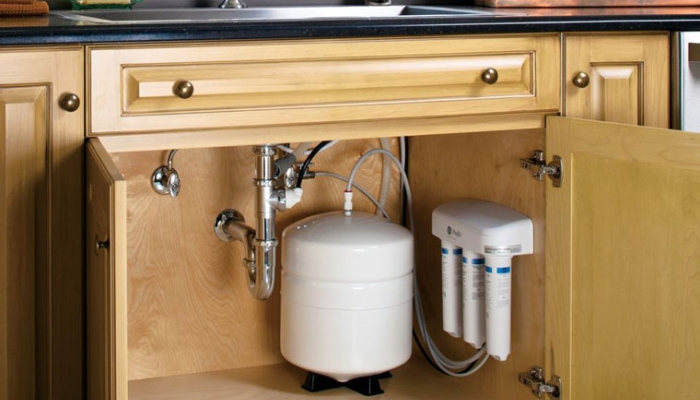Private well water quality assistance available
NRD to offer reverse osmosis program
The Upper Big Blue Natural Resources District is launching a new program to address drinking water quality concerns in the district. The program will provide up to $500 per home for a point-of-use reverse osmosis (RO) system on properties where the drinking water well exceeds the level of nitrate deemed safe by the Environmental Protection Agency (EPA), which is 10 PPM.
The State of Nebraska also has a reverse osmosis funding program for private well owners. A key difference for the NRD’s program is that it does not require that the well be registered. Additionally, the water samples will be tested locally for free in the NRD lab, rather than having to be shipped to a state lab. These changes should remove some of the main barriers to access that have been reported by district residents.
Another important difference in the state funded program and the NRD program is the amount available. The state program provides up to $4,000 per application for a whole-house RO system, while the NRD funds provide a smaller amount for a point-of-use system.
Once installed, yearly maintenance and operation costs of a point-of-use reverse osmosis system run between $50 and $100 a year for filter membranes which must be regularly replaced. Maintenance of the system including replacement filters will be the responsibility of the well owner, not the NRD.
A reverse osmosis system is one of the safest and most effective forms of water filtration available. Using pressure, water is forced through semi-permeable filters, resulting in a high degree of filtration and contaminant reduction. Contaminants bind to the filter media, allowing clean water to pass through. Reverse osmosis water filtration systems connect to existing water lines under a sink or refrigerator water dispenser. Properly maintained reverse osmosis water filtration systems will remove drinking water nitrate, whereas many other home filtration methods cannot.
Nitrogen is a naturally occurring element. However, elevated levels of nitrogen are present in Nebraska due to the use of fertilizer. Excess fertilizer moves through the soil profile and eventually ends up in the groundwater that most Nebraskans use for drinking. On the way to the water table, it also activates other elements and compounds such as arsenic, selenium, and uranium, which are naturally found in the soil, but become a health hazard for humans when they end up in the water supply. According to research from the University of Nebraska Medical Center, poor water quality due to these contaminants has been linked to a number of adverse health outcomes, including pediatric cancers and birth defects.
While municipal water systems in Nebraska communities are required to provide water that meets EPA standards for these contaminants, private well users in Nebraska are responsible for maintaining the integrity of their own water supply. They should have it tested annually for contaminants—a process that residents of the Upper Big Blue NRD can do for free through its walk-in water testing program (which tests for nitrates and bacteria) and at-home test kits (which test for nitrate, nitrite, and phosphorus).
For full details on the NRD’s Point of Use Reverse Osmosis Water Filtration System Pilot Program as well as application materials, visit www.upperbigblue.org/RO.
Additional Resources
- Nitrate Contamination in Drinking Water: Evaluating the Health Effects and Costs https://www.thisoldhouse.com/plumbing/reviews/reverse-osmosis-system-cost
- Nitrate and Human Health (video) https://youtu.be/7EPjhQlruKQ
- Learn the Pros and Cons of Reverse Osmosis Water Filtration Systems https://www.forbes.com/home-improvement/home/reverse-osmosis-water-pros-cons/

